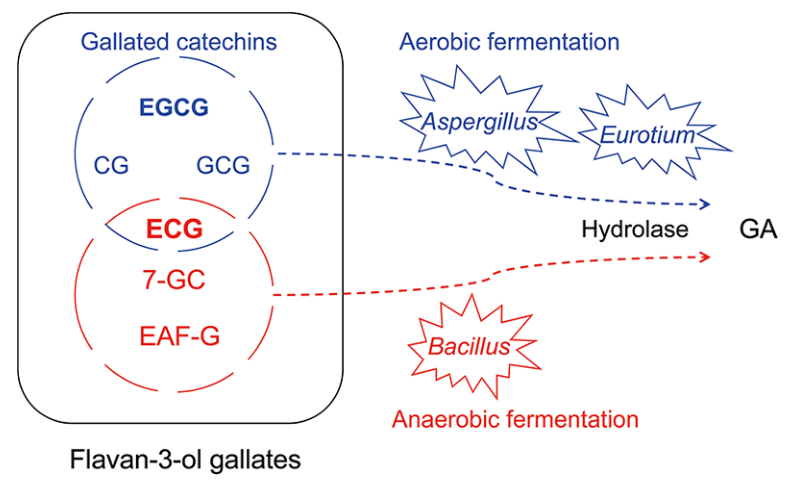Metabolite and Microbiome Profilings of Pickled Tea Elucidate the Role of Anaerobic Fermentation in Promoting High Levels of Gallic Acid Accumulation

- Journal:Journal of Agricultural and Food Chemistry
- Key Words:gallic acid, EGCG, flavan-3-ol gallates, Bacillus
- Abstract:Gallic acid (GA) is an important active ingredient for its pharmacological activities. High levels of GA in tea can be obtained by anaerobic fermentation, but its mechanism is still unclear. Here, the profiles of metabolites and microbiomes in pickled tea were analyzed. The results showed that GA of pickled tea increased to 24.26 mg/g at 18 d after anaerobic fermentation, which was accompanied by the reducing levels of epicatechin gallate (ECG), epiafzelechin-3-O-gallate (EAG), and 7-galloylcatechin (7GC) and the increasing relative abundances of Bacillus and other six bacterial genera. However, epigallocatechin gallate (EGCG) was basically stable during the whole fermentation process. These results suggested that EGCG contributes little to the GA formation during anaerobic fermentation, but ECG, EAG, and 7-GC should be the key precursors to form GA; moreover, bacteria, especially Bacillus, may be responsible for their bioconversion. It will establish an effective way to increase GA in tea production.
- Translation or Not:no
- Date of Publication:2020/11/09
- Included Journals:SCI
- Links to published journals:https://pubs.acs.org/doi/10.1021/acs.jafc.0c06187
